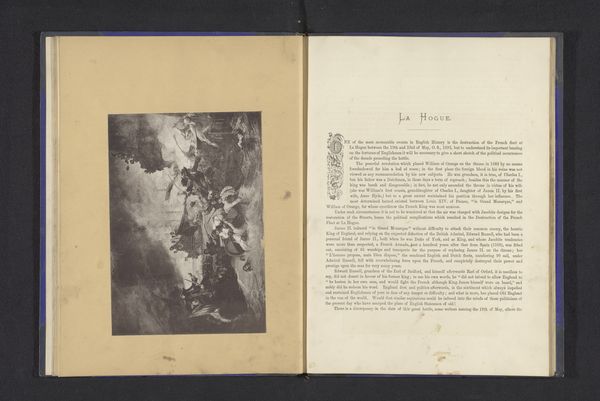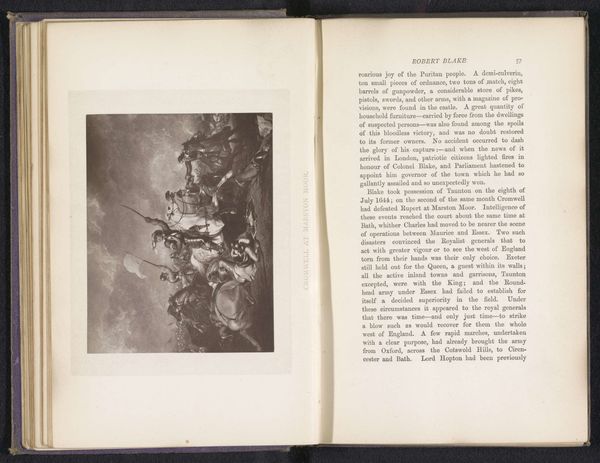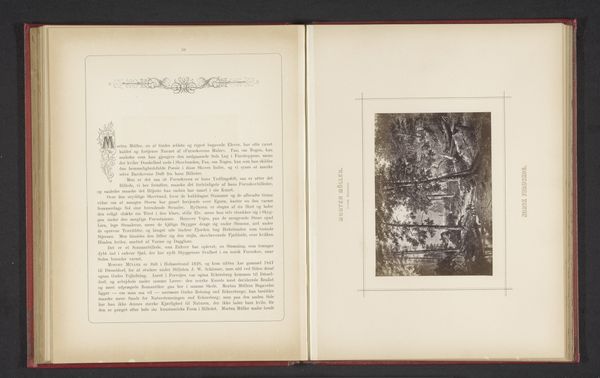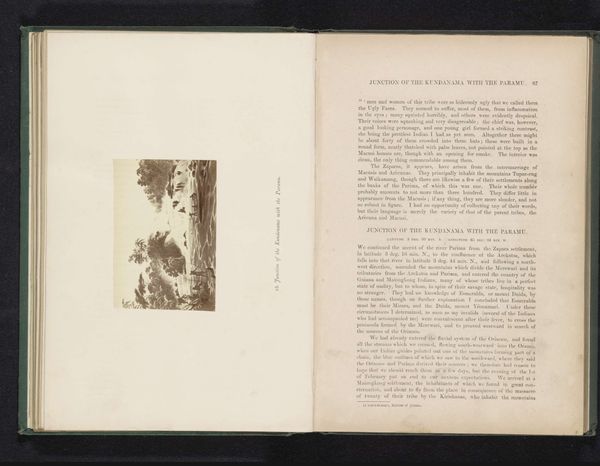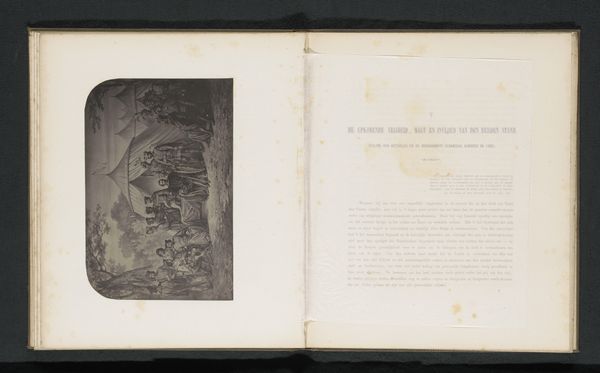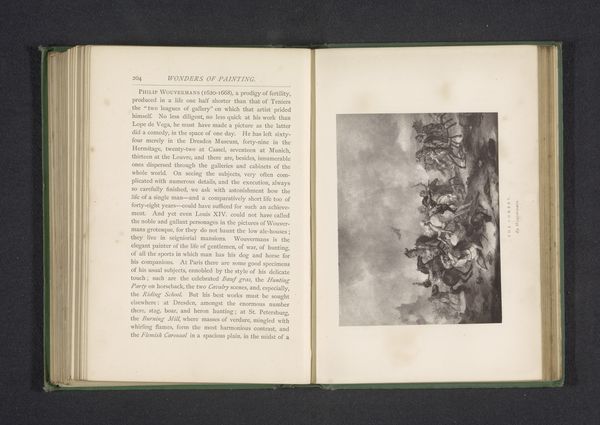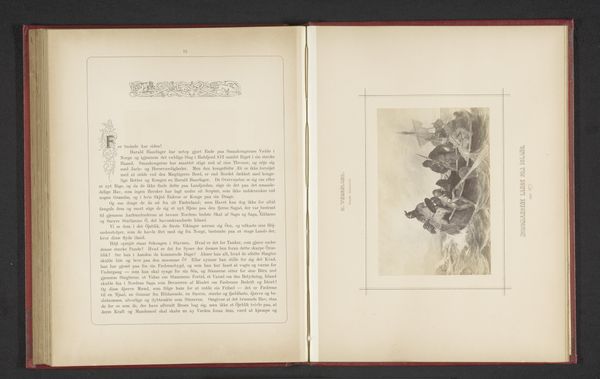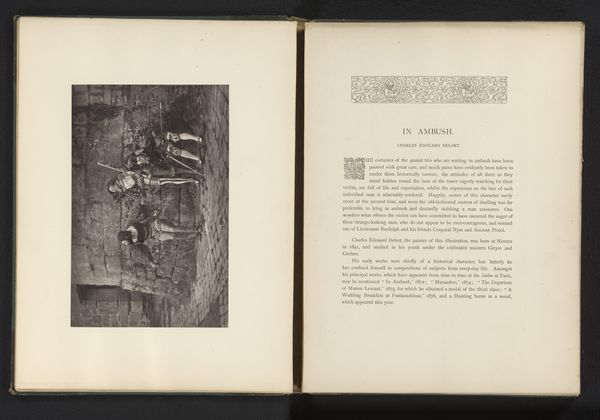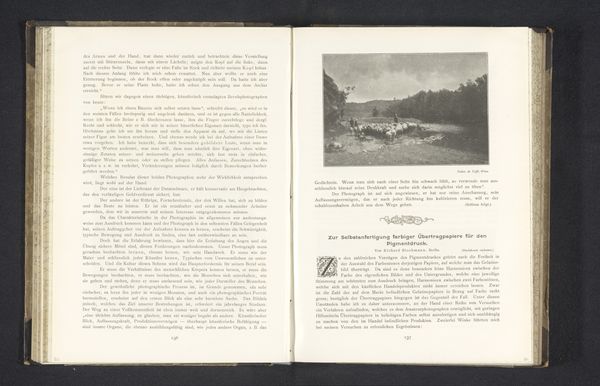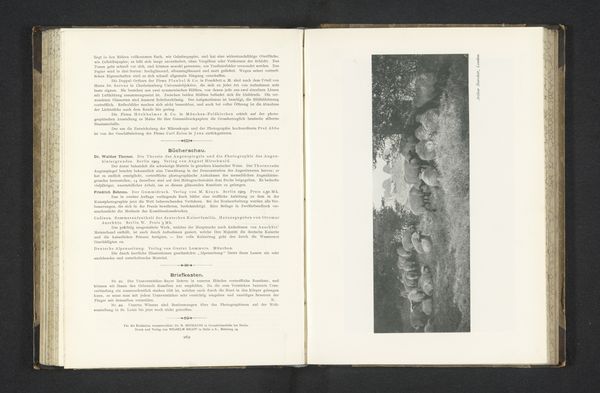
Reproductie van een schilderij van landschap met een groep valkeniers door John Frederick Tayler before 1879
0:00
0:00
Dimensions: height 192 mm, width 243 mm
Copyright: Rijks Museum: Open Domain
Curator: Before us we have a reproduction of a painting titled "Reproductie van een schilderij van landschap met een groep valkeniers door John Frederick Tayler," made before 1879. The print gives us an image of figures in an open, seemingly wild landscape, practicing falconry. Editor: It gives an immediate impression of hierarchical structures in action, a depiction of privileged leisure unfolding within the landscape, with that striking contrast of open nature versus imposed order. Curator: Let's focus on that compositional aspect. Tayler is clearly working within a Romantic idiom. The landscape, though not overtly dramatic, provides a picturesque backdrop. Note the arrangement of figures – the careful distribution of light and shadow serves to direct the viewer's eye through the scene. It all resolves in formal harmony. Editor: I’m seeing it rather differently. While there's a surface-level aesthetic appeal in the landscape, to read it solely in formal terms, one ignores the ideological implications of representing falconry – a sport deeply entangled with power, social stratification, and even colonial endeavors. This wasn't an innocent pastime but a highly ritualized demonstration of dominance over nature and other beings. Curator: Agreed that falconry holds historical weight, yet its presence here contributes to a sense of an idealized past, typical within Romantic art. The very act of pictorial representation emphasizes surface appearances – the textures of clothing, the sheen of the horses. Each choice accentuates visual pleasure through a controlled chromatic scale. Editor: Precisely! That 'idealized past' veils how these pursuits historically consolidated power for elite men. The landscape itself transforms into a stage for reinforcing social dominance; its aesthetic appeal can almost become a form of justification or escapism, a way to ignore how power dynamics continue to shape the current era. We can still read power relations even in reproduced images like this one, by noticing what remains both visible and obscured. Curator: I see the thrust of your critique. Perhaps a consideration of the material as reproduction tempers some of that reading; still the Romantic pursuit for an artistic rendering of the beautiful continues to impact artistic trends today. Editor: I can acknowledge that while reflecting on who participates in and benefits from such aesthetic renderings can perhaps offer the critical lenses through which our gaze should focus today.
Comments
No comments
Be the first to comment and join the conversation on the ultimate creative platform.
